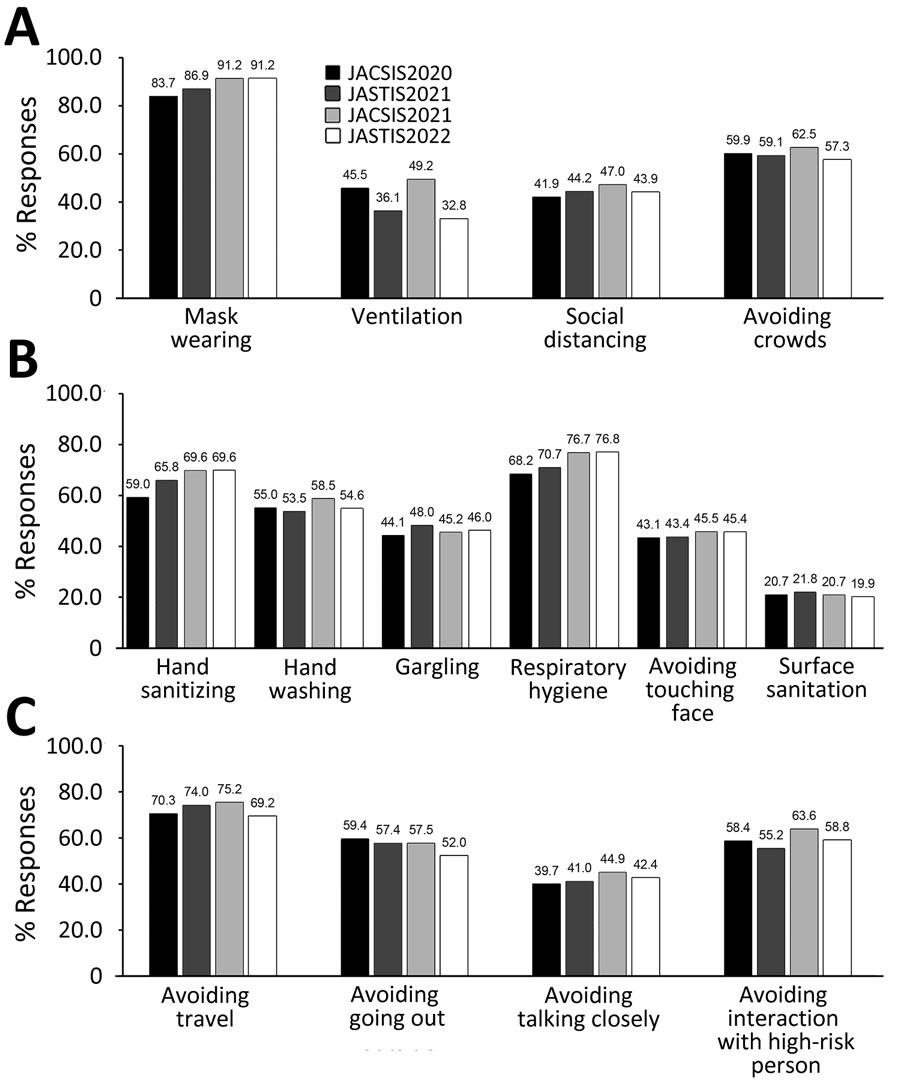Volume 29, Number 9—September 2023
Research
Compliance Trajectory and Patterns of COVID-19 Preventive Measures, Japan, 2020–2022
Figure 1

Figure 1. Transition of compliance with COVID-19 preventive behaviors over time in study of compliance trajectory and patterns of COVID-19 preventive measures, Japan, 2020–2022. Four surveys were conducted during August 25–September 30, 2020 (JACSIS2020); February 8–26, 2021 (JASTIS2021); September 27–October 29, 2021 (JACSIS2021); and February 1–28, 2022 (JASTIS2022). Percentages of responses from study participants indicate compliance with behaviors related to 3 behavioral areas: A) 3 Cs, a government of Japan campaign mandating the public to avoid closed spaces, crowded places, and close-contact settings to prevent COVID-19; B) personal hygiene; and C) avoiding social contact. Number of questionnaire responses was 103,312 from a total of 41,510 study participants. Values above bars indicate specific percentages. JACSIS, Japan COVID-19 and Society Internet Survey; JASTIS, Japan Society and New Tobacco Internet Survey.